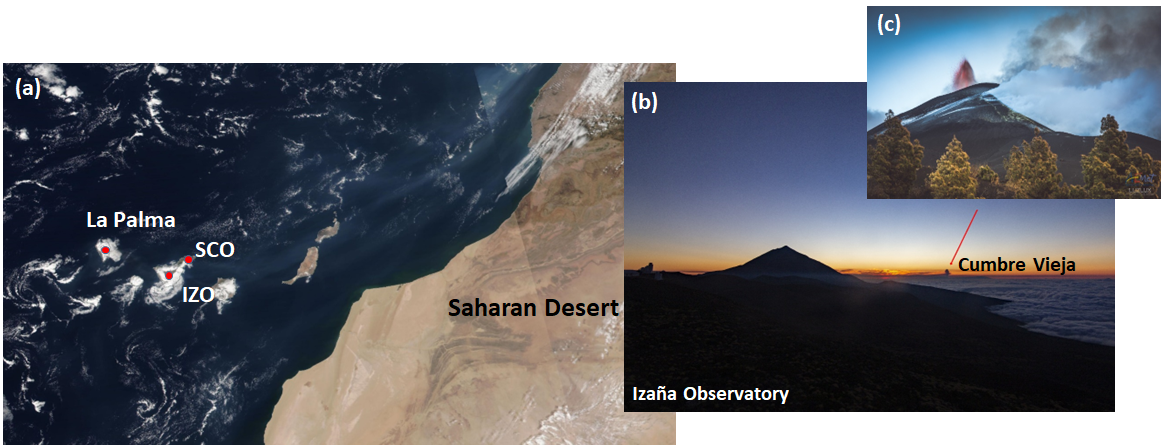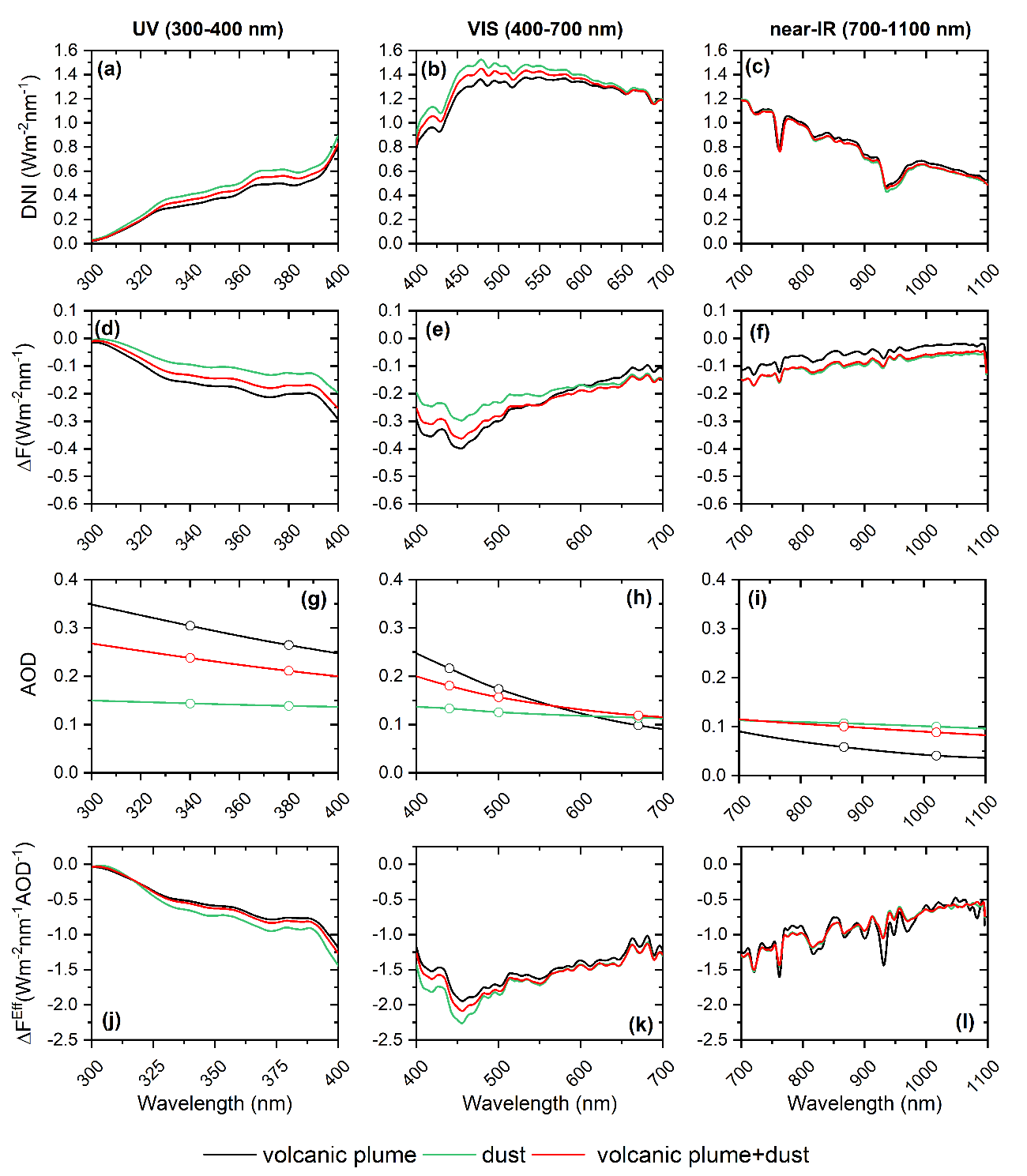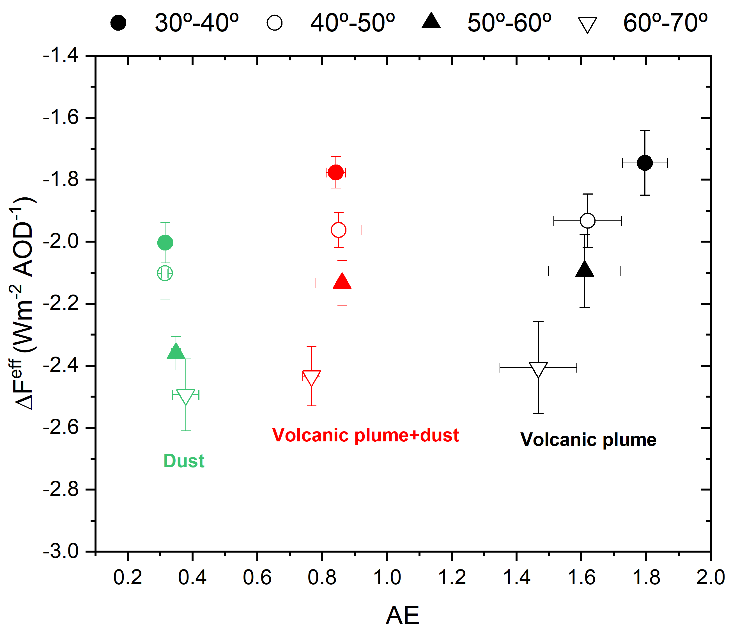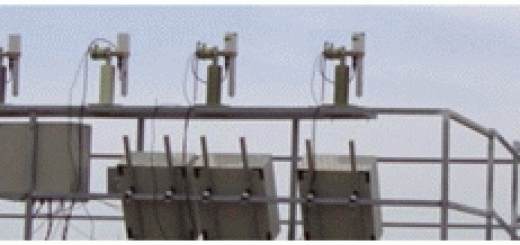“Spectral Aerosol Radiative Forcing and Efficiency of the La Palma Volcanic Plume over the Izaña Observatory” paper published in Remote Sensing
Clic here for spanish version
By injecting aerosols and gases into the atmosphere, volcanoes significantly affect global climate, force changes in atmospheric dynamics, and influence many distinct cycles such as hydrological, carbon, and biogeochemical cycles. However, the irregular temporal and spatial distributions of volcanic processes and their effects are still poorly characterised. The volcanic eruption on La Palma (Canary Islands, Spain), which occurred in the autumn of 2021, presented an outstanding opportunity to improve the current understanding of these natural phenomena. The special conditions at the Izaña Observatory (IZO, Tenerife) and its proximity to La Palma (∼140 km, Figure 1) make it a strategic site for the comprehensive study of the almost unperturbed volcanic plume including the climate effects.
In this context, this work presents the estimation of the spectral direct radiative forcing (∆F) and efficiency (∆Feff) from solar radiation measurements performed with an EKO MS-711 grating spectroradiometer at IZO during three events characterised by the presence of different types of aerosols: fresh volcanic aerosols, Saharan mineral dust, and a mixture of volcanic and Saharan dust aerosols.

Figure 1 (a) Image captured by the Moderate Resolution Imaging Spectroradiometer (MODIS) sensor onboard the National Aeronautics and Space Administration (NASA)’s Terra satellite (https://worldview.earthdata.nasa.gov) on 24 September 2021, where the locations of the Izaña Observatory (IZO), Santa Cruz Observatory (SCO) and the volcano on La Palma are indicated with red dots. (b) Image of the volcano taken from Izaña Observatory. (c) Image of the volcano on La Palma (LuzLux/AEMET).
Three case studies were identified using ground-based (lidar) data, satellite-based (Sentinel-5P Tropospheric Monitoring Instrument, TROPOMI) data, reanalysis data (Modern-Era Retrospective Analysis for Research and Applications, version 2, MERRA-2), and backward trajectories (Flexible Trajectories, FLEXTRA) (Figure 2), and subsequently characterised in terms of optical and micro-physical properties using ground-based sun-photometry measurements.
Despite the ∆F of the volcanic aerosols being greater than that of the dust events (associated with the larger aerosol load present), the ∆Feff was found to be lower (Figure 2).

Figure 2.- Spectral direct normal irradiance (DNI, Wm−2nm−1) (a–c), aerosol direct radiative forcing (∆F, Wm−2nm−1) (d–f), and aerosol direct radiative forcing efficiency (∆Feff, Wm−2nm−1AOD−1) (j–l), considering the AOD at each measured wavelength of the EKO (g–i), for the UV (300–400 nm), VIS (400–700 nm), and near-IR (700–1100 nm) spectral ranges at an SZA of 30˚and for the three case studies at the IZO: volcanic plume (black), dust (green), and volcanic plume + dust (red). The circles in (g–i) represent the AOD performed by CIMEL-AERONET.
The spectral ∆Feff values at 440 nm ranged between −1.9 and −2.6 Wm−2nm−1AOD−1 for the mineral dust and mixed volcanic and dust particles, and between −1.6 and −3.3 Wm−2nm−1AOD−1 for the volcanic aerosols, considering solar zenith angles between 30˚ and 70˚, respectively (see Figure 3).

Figure 3.- ∆Feff (Wm−2nm−1AOD−1) at 440 nm versus AE as a function of the SZA (˚) for the three case studies at the IZO: volcanic plume, dust, and volcanic plume + dust. The dots represent the ∆Feff and AE mean values for SZA intervals of 30–40˚, 40–50˚, 50–60˚, and 60–70˚. Error bars indicate standard deviations.
For more details about this work please refer to: García, R.D.; García, O.E.; Cuevas-Agulló, E.; Barreto, Á.; Cachorro, V.E.; Marrero, C.; Almansa, F.; Ramos, R.; Pó, M. Spectral Aerosol Radiative Forcing and Efficiency of the La Palma Volcanic Plume over the Izaña Observatory. Remote Sens., 15, 173. https://doi.org/10.3390/rs15010173, 2023.






